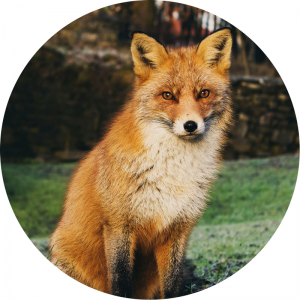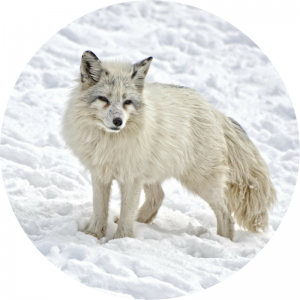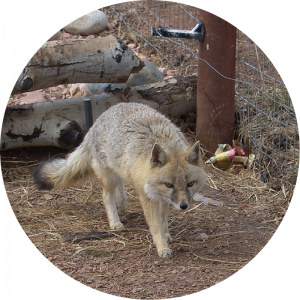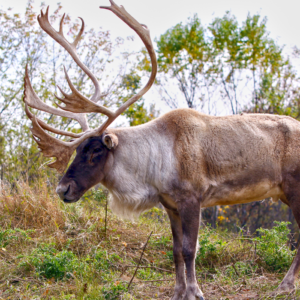Both cunning and stunning: Discover Canadian foxes!

Amanda Simard, Writing Intern
Written by writing intern Amanda Simard.
This month’s calendar photo features a Red Fox and was taken near Ottawa, ON. How much do you know about foxes?
The Red Fox is the most widespread fox species, with over 45 recognized subspecies. Did you know male foxes are called tods, dogs or reynards, while female foxes are called vixens and young foxes are called cubs, pups or kits?
The Red Fox is one of four species of fox found in Canada, two of which are threatened species. Learn more about Canadian foxes![gap height=”30″]

Red Fox
- Scientific name: Vulpes vulpes
- Status under SARA: no status
- Canadian range: throughout Canada
- Habitat: they prefer mixed vegetation habitats but are adaptable to a wide range of habitats including forests, tundra, prairies and even urban areas.
- Size: length (with tail): 90 – 112 cm; weight: 3.6 – 6.8 kg
- Description: Red Foxes range from pale yellowish-red to deep red. They have white undersides, their paws are usually black and their tail is white or black tipped.[gap height=”30″]

Arctic Fox
- Scientific name: Vulpes lagopus
- Status under SARA: no status
- Canadian range: northern Canada
- Habitat: arctic and alpine tundra.
- Size: length (with tail): 75 – 115 cm; weight:5 – 9 kg
- Description: Arctic Foxes are white in the winter and brown in the summer – the back, tail and legs turn dark brown while the underside stays somewhat paler. A small number of Artic Foxes have a blueish-gray coat through the winter.[gap height=”60″]

Grey Fox
- Scientific name: Urocyon cinereoargenteus
- Status under SARA: Threatened. The 2015 COSEWIC assessment also designated the species as “Threatened.”
- Canadian range: Ontario
- Habitat: often deciduous forests, but they are adaptable to a variety of habitats. Their dens are often found in dense brush.
- Size: length (with tail):5 – 156.8 cm; average weight: males – 4.1 kg, females – 3.9 kg
- Description: The Gray Fox has a grizzled gray colour, with red fur on the neck, sides, and legs. It has a black stripe down its back to the tip of its tail.[gap height=”30″]
- Scientific name: Vulpes velox
- Status under SARA: Threatened. The 2009 COSEWIC assessment also designated the species as “Threatened.”
- Canadian range: Alberta, Saskatchewan
- Habitat: open short-grass and mixed-grass prairies.
- Size: length: approximately 80 cm; average weight: males – 2.45 kg, females – 2.25 kg
- Description: The Swift Fox is smaller and paler than the Red Fox. It has relatively large pointed ears and a black-tipped tail.[gap height=”75″]
Conservation
One of the main threats to both Gray Foxes and Swift Foxes is hunting and trapping. Additionally, the Swift Fox is vulnerable to habitat destruction.
What you can do
You can help through your valued and continued support of Nature Canada’s varied conservation efforts.




